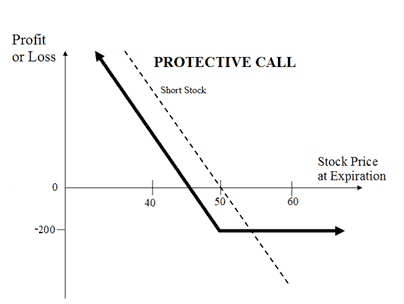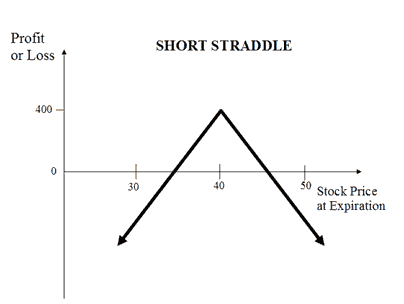 Zerodha (Trading & Demat Account)
Zerodha (Trading & Demat Account)
FREE Equity Delivery and MF
Flat ₹20/trade Intra-day/F&O
 Zerodha (Trading & Demat Account)
Zerodha (Trading & Demat Account)
FREE Equity Delivery and MF
Flat ₹20/trade Intra-day/F&O

|
|
Compare Protective Call (Synthetic Long Put) and Short Straddle (Sell Straddle or Naked Straddle) options trading strategies. Find similarities and differences between Protective Call (Synthetic Long Put) and Short Straddle (Sell Straddle or Naked Straddle) strategies. Find the best options trading strategy for your trading needs.
| Protective Call (Synthetic Long Put) | Short Straddle (Sell Straddle or Naked Straddle) | |
|---|---|---|
 |
 |
|
| About Strategy | The Protective Call strategy is a hedging strategy. In this strategy, a trader shorts position in the underlying asset (sell shares or sell futures) and buys an ATM Call Option to cover against the rise in the price of the underlying. This strategy is opposite of the Synthetic Call strategy. It is used when the trader is bearish on the underlying asset and would like to protect 'rise in the price' of the underlying asset. The risk is limited in the strategy while the rewards are unlimited. How to use a Protective Call trading strategy? The usual Protective Call Strategy looks like as below for State Bank of India (SBI) Shares which are currently traded at Rs 275 (SBI Spot Price): Protective Call Orders - SBI Stock Orde... Read More | The Short Straddle (or Sell Straddle or naked Straddle) is a neutral options strategy. This strategy involves simultaneously selling a call and a put option of the same underlying asset, same strike price and same expire date. A Short Straddle strategy is used in case of little volatility market scenarios wherein you expect none or very little movement in the price of the underlying. Such scenarios arise when there is no major news expected until expire. This is a limited profit and unlimited loss strategy. The maximum profit earned when, on expire date, the underlying asset is trading at the strike price at which the options are sold. The maximum loss is unlimited and occurs when underlying asset price moves sharply in upward or down... Read More |
| Market View | Bearish | Neutral |
| Strategy Level | Beginners | Advance |
| Options Type | Call + Underlying | Call + Put |
| Number of Positions | 2 | 2 |
| Risk Profile | Limited | Unlimited |
| Reward Profile | Unlimited | Limited |
| Breakeven Point | Underlying Price - Call Premium | 2 Breakeven Points |
| Protective Call (Synthetic Long Put) | Short Straddle (Sell Straddle or Naked Straddle) | |
|---|---|---|
| When to use? | The Protective Call option strategy is used when you are bearish in market view and want to short shares to benefit from it. The strategy minimizes your risk in the event of prime movements going against your expectations. |
This strategy is to be used when you expect a flat market in the coming days with very less movement in the prices of underlying asset. |
| Market View | Bearish When you are bearish on the underlying but want to protect the upside. |
Neutral When trader don't expect much movement in its price in near future. |
| Action |
|
|
| Breakeven Point | Underlying Price - Call Premium When the price of the underlying is equal to the total of the sale price of the underlying and premium paid. |
2 Breakeven Points There are 2 break even points in this strategy. The upper break even is hit when the underlying price is equal to the total of strike price of short call and net premium paid. The lower break even is hit when the underlying price is equal to the difference between strike price of short Put and net premium paid. Break-even points: Lower Breakeven = Strike Price of Put - Net Premium Upper breakeven = Strike Price of Call+ Net Premium |
| Protective Call (Synthetic Long Put) | Short Straddle (Sell Straddle or Naked Straddle) | |
|---|---|---|
| Risks | Limited The maximum loss is limited to the premium paid for buying the Call option. It occurs when the price of the underlying is less than the strike price of Call Option. Maximum Loss = Call Strike Price - Sale Price of Underlying + Premium Paid |
Unlimited There is a possibility of unlimited loss in the short straddle strategy. The loss occurs when the price of the underlying significantly moves upwards and downwards. Loss = Price of Underlying - Strike Price of Short Call - Net Premium Received Or Loss= Strike Price of Short Put - Price of Underlying - Net Premium Received |
| Rewards | Unlimited The maximum profit is unlimited in this strategy. The profit is dependent on the sale price of the underlying. Profit = Sale Price of Underlying - Price of Underlying - Premium Paid |
Limited Maximum profit is limited to the net premium received. The profit is achieved when the price of the underlying is equal to either strike price of short Call or Put. |
| Maximum Profit Scenario | Underlying goes down and Option not exercised |
Both Option not exercised |
| Maximum Loss Scenario | Underlying goes down and Option exercised |
One Option exercised |
| Protective Call (Synthetic Long Put) | Short Straddle (Sell Straddle or Naked Straddle) | |
|---|---|---|
| Advantages | Minimizes the risk when entering into a short position while keeping the profit potential limited. |
It allows you to benefit from double time decay and earn profit in a less volatile scenario. |
| Disadvantage | Premium paid for Call Option may eat into your profits. |
Unlimited losses if the price of the underlying move significantly in either direction. |
| Simillar Strategies | Long Put | Short Strangle, Long Straddle |

Add a public comment...

FREE Intraday Trading (Eq, F&O)
Flat ₹20 Per Trade in F&O
|
|